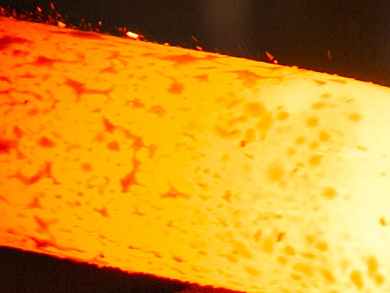Asegun Henry, Massachusetts Institute of Technology (MIT), Cambridge, USA, and colleagues have developed a concept for storing renewable energy and delivering it back into an electric grid on demand. The approach is based on storing the energy as heat instead of electricity.
The system could capture excess electricity from existing renewable energy systems, such as solar cells. Electricity can be converted into thermal energy via Joule heating, i.e, by passing an electric current through a heating element. The team proposes storing the heat energy in the form of molten silicon. Silicon can withstand extremely high temperatures.
The system would consist of a large, heavily insulated, 10 m-wide tank made from graphite and filled with liquid silicon, kept at a “cold” temperature of almost 1900 °C. Tubes with heating elements connect this cold tank to a second, “hot” tank. Electricity that needs to be stored is converted to heat in the heating elements. Meanwhile, liquid silicon is pumped out of the cold into the hot tank. It heats up as it passes through the tubes exposed to the heating elements. In the hot tank, the thermal energy is then stored at a much higher temperature of about 2400 °C.
When electricity is needed, the hot liquid silicon, which glows white, is pumped through another array of tubes. Here, specialized solar cells, known as multijunction photovoltaics, turn the light emitted by the silicon into electricity. The cooled silicon can be pumped back into the cold tank and reused. The system effectively acts as a large rechargeable battery.
The researchers refer to their system as “sun in a box” or TEGS-MPV for “Thermal Energy Grid Storage-Multi-Junction Photovoltaics”. Tests with a miniature graphite tank were promising: Silicon carbide was formed on the inside of the tank walls, creating a protective coating. According to the researchers, their system would be much more affordable than lithium-ion batteries. The team estimates that the system would cost about half as much as pumped hydroelectric storage, which is the cheapest form of grid-scale energy storage to date.
- Thermal energy grid storage using multi-junction photovoltaics,
Caleb Amy, Hamid Reza Seyf, Myles A. Steiner, Daniel J. Friedman, Asegun Henry,
Energy Environ. Sci. 2019.
https://doi.org/10.1039/c8ee02341g



